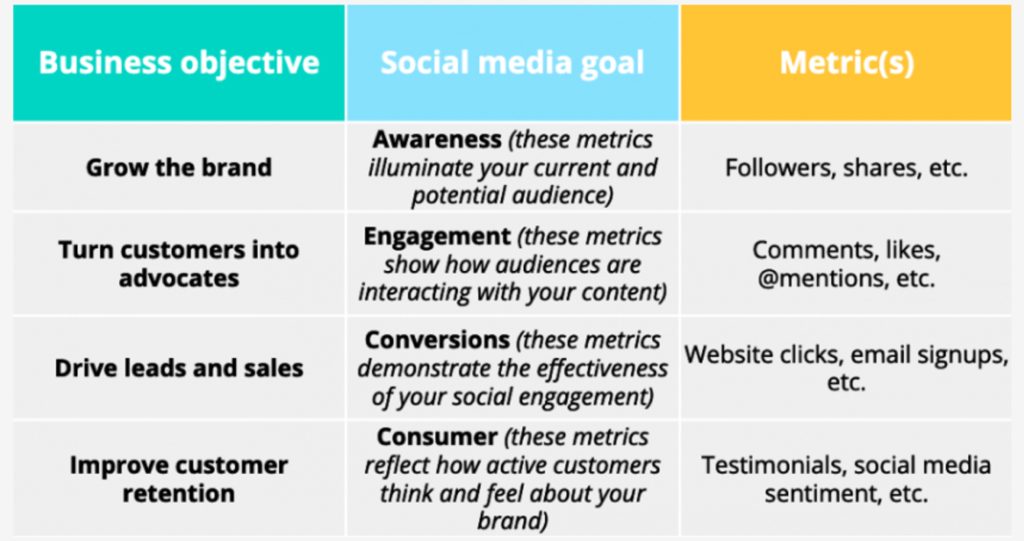The value of social media has increased tremendously, and for small businesses, social media will play an increasingly crucial role in driving sales, providing customer service, and developing brand awareness. In a time when companies are struggling, social media can be a low-cost lifeline for the longevity of your business.
When working at a small business, you are probably spread very thin. We also know that social media users regularly interact with companies they are interested in or invested in. Since social media can be a free resource for your business, we highly suggest that you start investing time into your brand awareness on these applications.
Determine Your Social Media Goals
The first and most critical step in revamping your social media practices is setting feasible goals for your brand. Before you can start developing these goals, you should complete an audit of the current state of your social media presence.
Once you have established a baseline, you should begin determining what is important to you and your brand. Take a look at your overall business strategy and look for ways to adjust your current approach to better meet your objectives. Your goals can range from minor improvements like establishing a posting pattern or something more prolonged, like establishing a following or increasing consumer sales or leads on your site.
Research Which Platforms Are Right For Your Business and Brand
When you are busy running your business, the last thing you want to do is spend time on a platform that doesn’t benefit your business. Each social media platform can help your brand in different ways, and narrowing down your choice to just a select few platforms will allow you to focus your efforts. So how do you choose the most beneficial social media platform for your business?
What Channel(s) Is Your Target Audience On?
Before you can select which platforms are most appropriate for your social media strategy, you need to determine your target audience. Once you identify whom you are trying to reach, concluding which platforms that audience is on will be more straightforward. Some questions you should be asking yourself are:
- Who is your typical customer?
- How old are they, and what gender is most commonly interested?
- What are they interested in outside of your product and service?
- Are your customers usually repeat customers or first-time product buyers?
Now that your audience has been profiled and you understand your goals on social media, you can begin investing time into particular platforms.
Facebook has 2.89 billion monthly active users, and with a massive amount of daily users, it is essential to understand the primary purpose for the average Facebook user. In the U.S., the average Facebook user is 40.5 years old and uses the platform to connect with old friends and maintain current relationships. Facebook can be a great choice if your brand is focused on an older audience or your goal is to build a dedicated following of clients, and you need a way to keep in touch with them. For your brand to be found on Facebook, you must ensure that your Facebook Business Page is public and utilize the power of images on your daily posts.
Instagram has quickly become one of the fastest-growing applications for young adults. Instagram relies on photos and videos to connect with your audience, offering your business the chance to portray your products creatively. As a result, this platform works well for visual-based companies, like art, food, retail, beauty, and niche industries. Instagram is an extremely useful place for any size business to thrive. Small businesses have the opportunity to take advantage of its unique features like the “For You” page, hashtags, geotagging, IGTV, IG Live, and the new addition of reels. Instagram has an intricate algorithm that prioritizes profiles that use 7-10 hashtags, popular geotags, and shares relevant content using multiple features. Instagram is a necessity for any small business-to-consumer brand.
Twitter is an excellent platform to build awareness for your brand. Twitter uses hashtags to show trending topics in the U.S. as well as your local community. Utilizing hashtags, your brand can engage in conversations with prospecting customers and participate in popular discussions. Consumer brands often use Twitter to promote events in real-time. Twitter also announced in 2019 that tweets will now appear in relevant Google search results, which can help your brand rank higher in the SERPs. Twitter gives your brand many opportunities to have direct communication with your consumers and answer questions that they may have about your products.
TikTok
As of 2021, TikTok has one billion active users worldwide. This short-form video-based application promotes “viral” content using an algorithm and hashtags similar to Instagram and incorporates music, video, and trends to share light-hearted brand messaging. Although the largest demographic of TikTok users are ages 16-24, it’s not just a trend for Gen Z. It’s one of the fastest-growing social media platforms and an advertising haven for small businesses looking to go viral from one video.
Small Businesses That Are Utilizing Organic Social Media Well
The fitness lifestyle brand Oiselle uses Instagram to fuel its mission of creating clothing for women and promoting this way of life on its page through images, hashtags, stories, and relationships with followers. When scrolling through their pictures, you are transported to a bright, judgment-free, inclusive, and simple place. Every image is full of personality, allowing viewers to imagine themselves in the product. As a small business, you can use Instagram to showcase your products in action. Demonstrating the culture and lifestyle encompassing your products will correlate positive feelings with your brand.
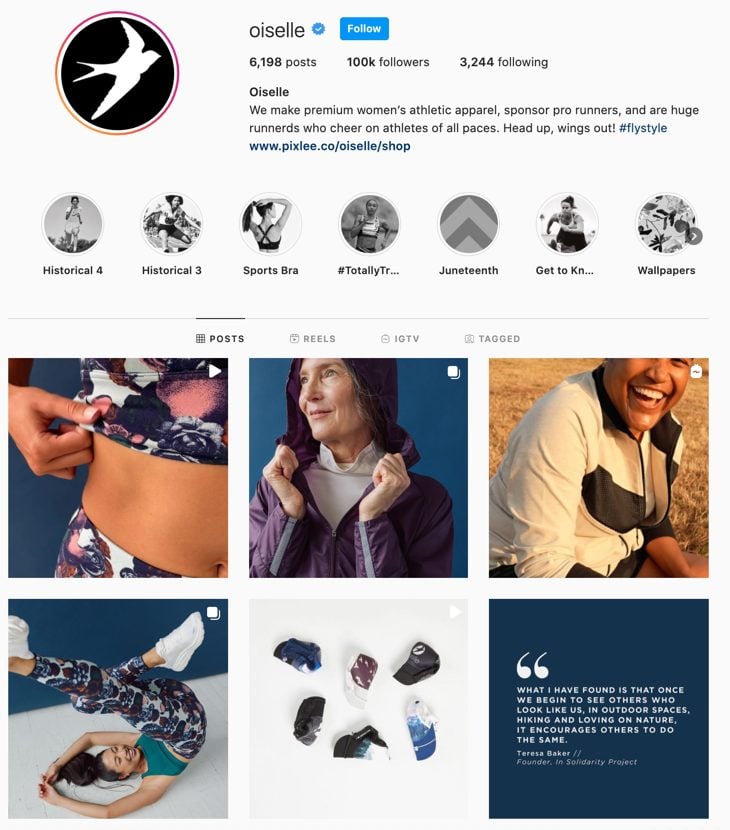
In 2019 Jenna Labiak, founder of The Silk Labs, put faith into a new app and posted on TikTok for the first time. Little did she know that her business would take off on that one post; it got over 600K likes and 3.5M views. Jenna experienced this success simply by taking advantage of the platform’s trends; in particular, she took part in the “small business check” to build brand awareness. From that point on, her small business grew tremendously in both followers and sales. Her profile utilizes popular sounds, trends, and hashtags and will continue to grow as the app grows in users.
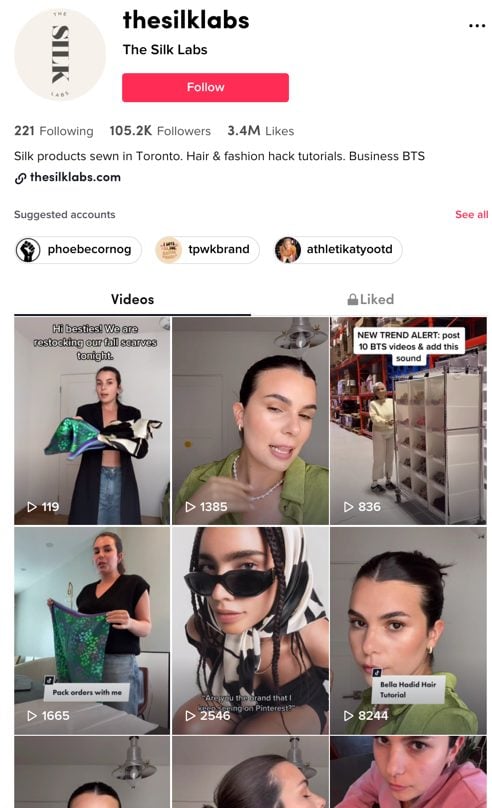
Twitter relies on trending topics and relatable content. However, you first need to set yourself up for success by customizing your profile and making it look credible and memorable. The Coug is a Twitter profile for a historic restaurant and bar in Pullman, WA. The business uses its historical relevance and popularity to gain and maintain dedicated and passionate followers by promoting appealing images, GIFs, and videos along with trendy topics that resonate with its audience.
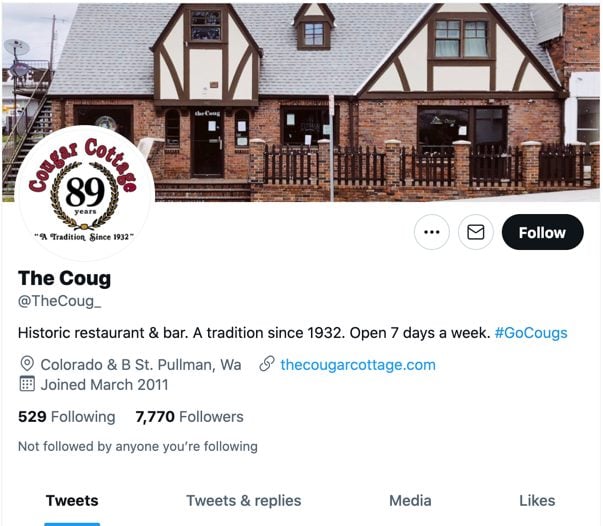
Mabel’s Labels is a high-quality label company that has done an excellent job of taking advantage of Facebook’s commerce features. The brand focuses on bright and youthful imagery to target mothers looking to organize and ease their children’s lives. Their profile uses engaging videos, photos, and Facebook live events to capture followers’ attention and features a Shop Now CTA linking viewers to their website’s homepage.
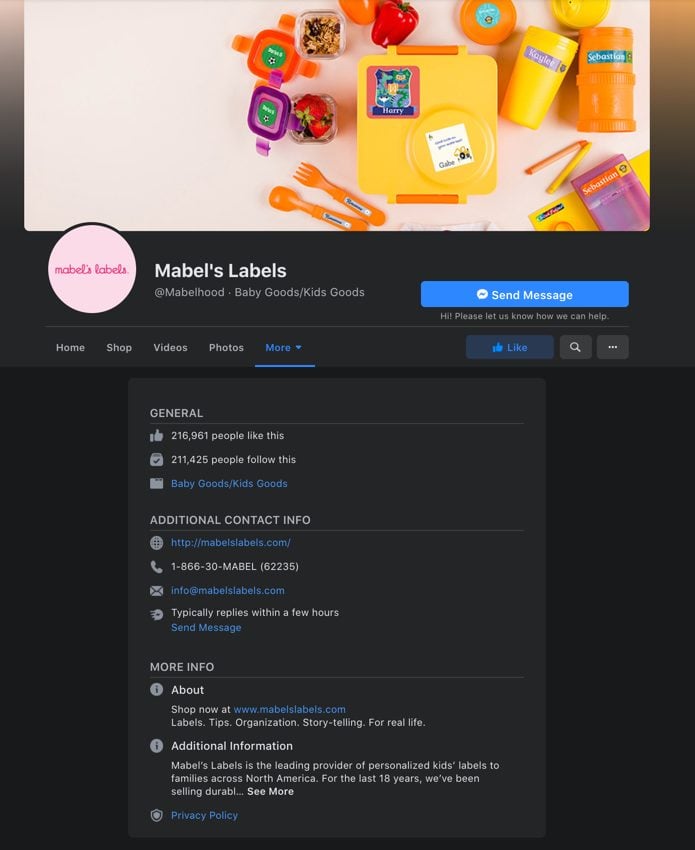
Our Favorite Social Media Tools for Small Businesses
Maintaining an effective social media presence can require a lot of effort, which can be tricky if you’re a small business with limited marketing resources. Here are a few of our favorite social media tools that can help you easily create fresh, engaging content your followers are looking for.
- Sprout Social: best overall social media management tool. Sprout Social is an all-in-one social management solution. It has the best mix of social media management and analytics to serve most SMB’s needs. Their platform offers multiple plans to fit any budget.
- Canva: Social media designer tool. Canva is a tool many digital marketers rely on for making great-looking social media images and marketing content. You can use the ready-made templates and illustrations to make your images look professional and fit your brand aesthetic with little to no effort.
- Unsplash: Free images and pictures application. Unsplash is a free stock photography site. With thousands of images at your disposal, this is a great tool to retrieve high-quality graphics at any time.
- Animoto: Creative video maker tool. Animoto is a cloud-based video creation service that produces video from photos, video clips, and music into slideshows and customized web-based presentations.
To Wrap Up
Leveraging social media platforms as part of your marketing strategy may seem daunting if you do not approach it with a plan in place. It’s essential to engage with your audience, be active, develop new strategies, and keep up on recent trends to grow your social media presence. By understanding your audience and what platforms they use (and why), you can streamline your efforts and ensure you’re spending your time and resources building brand awareness in the right places. But remember to do your research; what works for one company might not work for another, so it is essential to understand your brand’s goals.
The post How To Grow Your Social Media Presence: Tips For Small Businesses appeared first on Portent.

